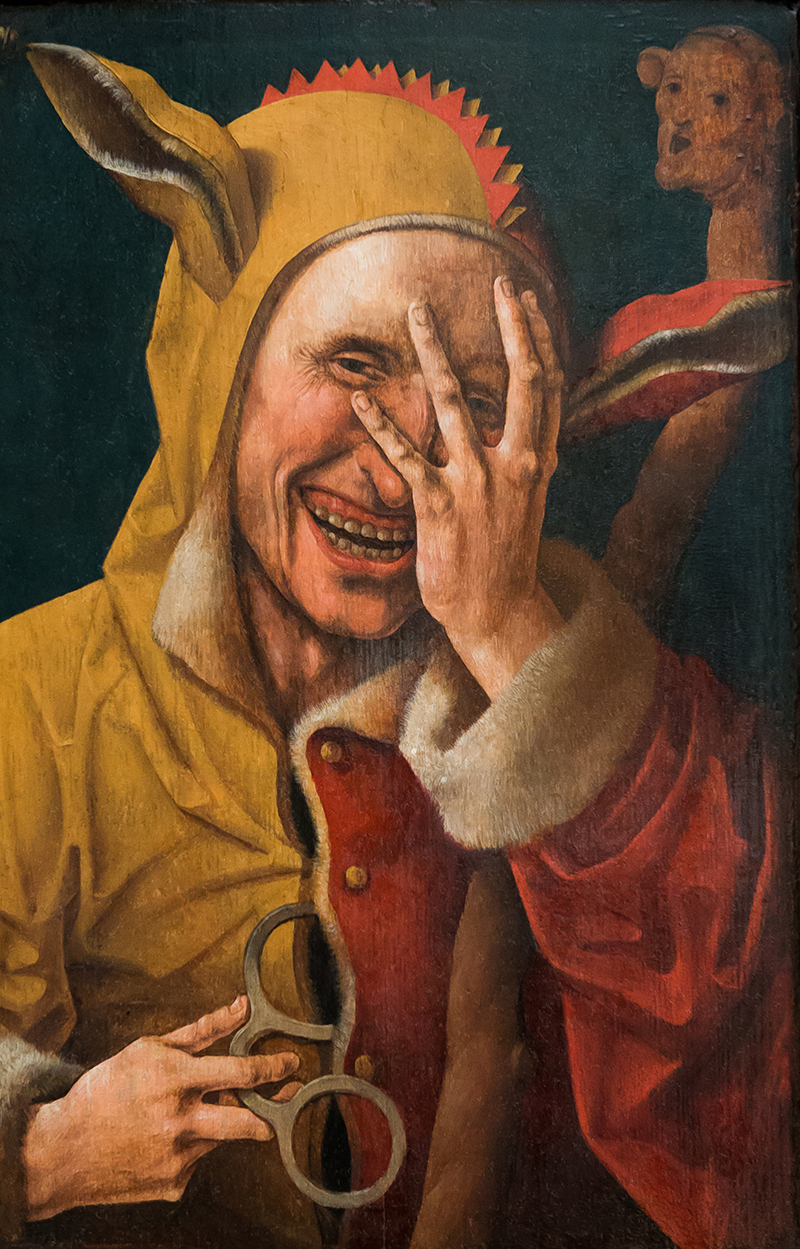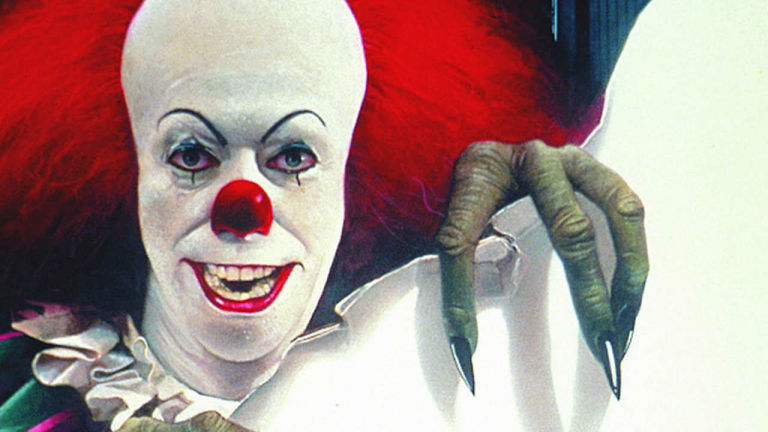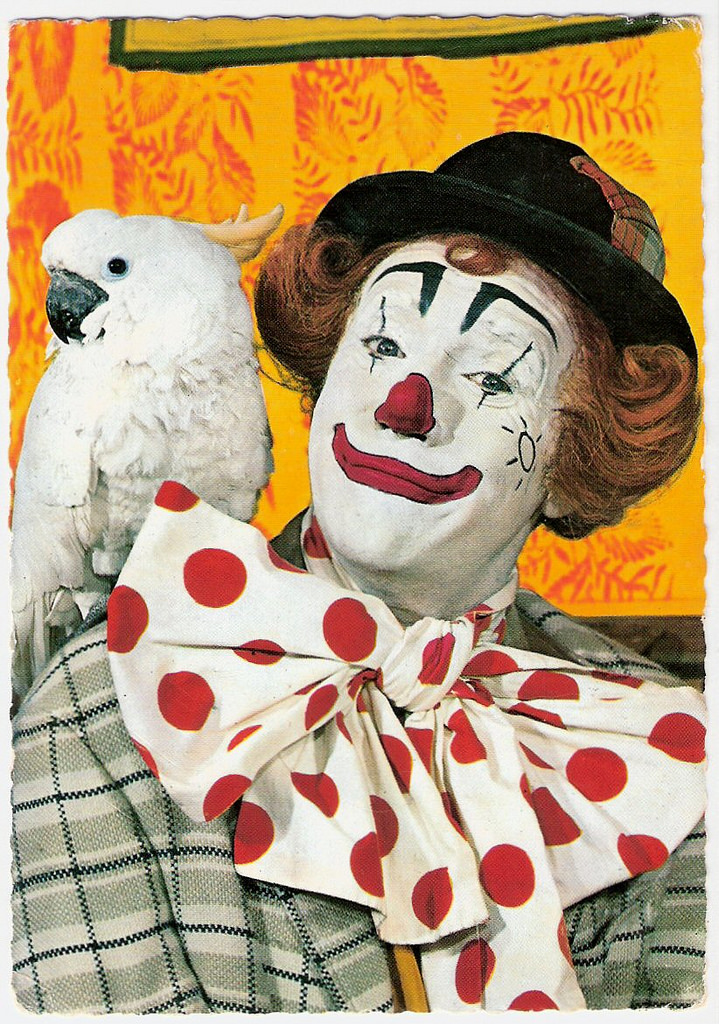Fear of clowns: Why are people afraid of clowns?
Clowns are supposed to bring laughter, but the emotions they evoke are often anything but pleasant.
"Did you see the clown in the woods?"
On Aug. 26, 2016, Greenville, South Carolina, resident Donna Arnold told FOX Carolina that she had contacted the Greenville County Sheriff's Office after her son and other children reported seeing a clown near their apartment complex. Arnold said that "about 30 kids" asked her if she had seen the clown.
Bizarre as it sounds, this wasn't the first clown sighting in Greenville County that week, nor was it the last. On Aug. 24 of that year, the property manager in Arnold's apartment complex posted a notice warning residents about "a person dressed in clown clothing" who was allegedly trying to lure children into the woods. And on Aug. 31, a 13-year-old boy claimed he saw a man dressed as a clown knocking on the front door of the boy's home.
Related: Why are humans so curious?
The man was wearing "a painted mask with orange hair," the boy told FOX Carolina. The boy's mother added in an interview that she came home as soon as she could, but when she got there, the clown was gone.
As of Sept. 7, 2016, Greenville officials had received reports of four clown sightings within the city limits, Police Chief Ken Miller told reporters at a press conference. Miller didn't crack a smile when he said, "The clowning around needs to stop."
Whether the Greenville clown, or clowns, pose a threat still remains to be seen. But the unease and fear that clowns can inspire — even in less ominous circumstances — is no laughing matter. Experts told Live Science that many people have negative associations with clowns in general, even though the characters are supposed to bring laughter. Why do clowns evoke such unpleasant emotions?
Get the world’s most fascinating discoveries delivered straight to your inbox.
Not always harmless
Entertainers who don funny outfits and makeup and behave foolishly for the amusement of others have existed for thousands of years. Accounts from ancient Egypt, China and Greece refer to clowns and jesters as members of royal entourages, Smithsonian.com reported. Jesters and fools were also widespread in medieval courts across Europe.
But the humor of these characters wasn't always harmless. Secure in their status as jokers, royal jesters could direct amusingly insulting potshots at even the king himself, said Ben Radford, author of "Bad Clowns" (University of New Mexico Press, April 2016), which explores the dark history of these comical buffoons.
"A jester might make a sly joke about how many mistresses a king had or how fat he was," Radford told Live Science. "Their role allowed them to do that. As the jester, they were the only person in the kingdom who would be given that license."
By comparison, what is now seen as a typical clown — a circus performer with a wide, painted grin, red nose and oversized shoes — is a relative newcomer, emerging in the last century or so, Radford explained. As to why people might fear clowns, Radford suggested that the heavy, mask-like makeup could cause unease because it obscures a clown's true expressions.
"There's something inherently menacing about a masked stranger," Radford said.
Agents of the dark side
Clowns also have qualities that can appear suspiciously otherworldly, Radford told Live Science. They can cram 20 of their friends into a tiny car. They can unfurl endless scarves or squirt water from floral boutonnieres. So it's no wonder that children, or even adults, in a clown's audience might be inclined to connect the figures to the supernatural.
And for some people, the unpredictability of clowns makes them frightening, said Kristin Kunkle, a clinical psychologist at the Columbia University Clinic for Anxiety and Related Disorders.
"They pull things out of their sleeves. They blow up balloons and then pop them," Kunkle said. "They do things that bring on a rush of emotion that some people might be excited about and some people might find overwhelming."
It probably hasn't helped that in recent decades, a number of horror movies and TV shows have prominently featured gleefully diabolical clowns, such as the costumed alien invaders in "Killer Klowns from Outer Space" (1988), Pennywise from "It" (1990), Killjoy from the ongoing "Killjoy" film series (launched in 2000), and Captain Spaulding from "House of 1000 Corpses" (2003) and "The Devil's Rejects" (2005).
Related: Top 10 scariest movies ever
Batman's villainous nemesis the Joker is another murderous example of a man whose clown makeup and maniacal grin accompany heinous crimes and evil deeds. The Joker first appeared in the debut issue of the Batman comic book, in 1940, and has since cackled his way across TV screens in both live-action and animated series, and in movies, from "Batman" (1989) to "Suicide Squad" (2016).
But perhaps the scariest example of all is the so-called "Killer Clown": real-life serial killer and rapist John Wayne Gacy, Jr. A professional clown, Gacy was convicted in 1980 of sexually assaulting and murdering at least 33 young men and boys, many of whom he buried under his house.
Fear and loathing
Any of these terrifying examples could inspire a feeling of at least mild unease around clowns, even in someone who has never had a negative experience with such a character in real life, Radford said. But some people undergo a more severe reaction: an intense and uncontrollable fear of clowns, also known as coulrophobia. The American Psychiatric Association's Diagnostic and Statistical Manual of Mental Disorders, Fifth Edition (DSM-5) includes coulrophobia in the "specific phobia" group, code 300.29.
And as a phobia, it is "fairly common," Kunkle told Live Science, identifying coulrophobia as one of the fears that she and her colleagues ask about when conducting anxiety assessments with new patients.
"If someone has a clown phobia, they might have an anxiety response just from looking at a picture of a clown," Kunkle said.
Clinical phobias differ from typical anxiety in the severity of the person's emotional response to the object of fear, and how much that response affects the person's life, said Scott Woodruff, a psychologist with the American Institute for Cognitive Therapy in New York City.
"For the average person, clowns aren't terribly relevant, so experiencing fear when seeing clowns once or twice a year probably wouldn't merit treatment," Woodruff told Live Science in an email.
"On the other hand, a father who avoids all child birthday parties just in case a clown shows up very well might want help," Woodruff added.
Treating a clown phobia — or any type of phobia — is typically done using a technique called exposure therapy, with the patient incrementally increasing his or her exposure to whatever causes the fear, Woodruff explained.
Someone undergoing treatment for a clown phobia wouldn't confront a clown face-to-face on the first day, Woodruff said. Rather, the person might start by looking at pictures of a clown. When the individual felt comfortable with that, the level of challenge would increase. The person could progress to watching movie scenes featuring clowns, or observing a clown from a distance.
"Over time, clients learn they are able to tolerate the distress, which often declines dramatically," Woodruff told Live Science.
Terrifying the master of terror
But if you're spooked by clowns, you're in good company. Writer Stephen King, famed master of the horror-fiction genre and creator of the demonic clown Pennywise in the novel "It," told the Bangor Daily News on Sept. 9 that "clowns really can be terrifying."
King admitted that seeing a clown outside of the character's typical context, such as a circus or a birthday party, could be unnerving — yes, even for him.
"If I saw a clown lurking under a lonely bridge (or peering up at me from a sewer grate, with or without balloons), I'd be scared, too," King said.
Clown phobias aside, a typical circus or birthday party clown is unlikely to cause anyone harm. However, officials in Greenville are still on the lookout for people behaving suspiciously while dressed as clowns, and have announced plans to arrest and charge anyone violating standing city ordinances against wearing costumes and identity-concealing masks in public spaces.
Unless, of course, it happens to be Halloween.
Originally published on Live Science.

Mindy Weisberger is a science journalist and author of "Rise of the Zombie Bugs: The Surprising Science of Parasitic Mind-Control" (Hopkins Press). She formerly edited for Scholastic and was a channel editor and senior writer for Live Science. She has reported on general science, covering climate change, paleontology, biology and space. Mindy studied film at Columbia University; prior to LS, she produced, wrote and directed media for the American Museum of Natural History in NYC. Her videos about dinosaurs, astrophysics, biodiversity and evolution appear in museums and science centers worldwide, earning awards such as the CINE Golden Eagle and the Communicator Award of Excellence. Her writing has also appeared in Scientific American, The Washington Post, How It Works Magazine and CNN.






